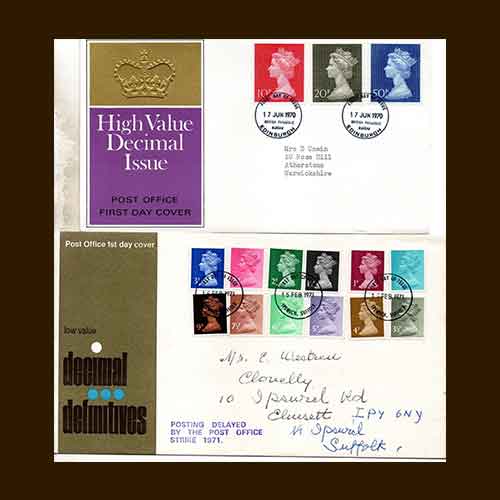Short story of decimalisation of United Kingdom
2022-02-22 Tue
In 1971 United Kingdom became the first English speaking nation to decimalise their currency. This system was not new because the Tsar Peter the great used this system on Russian rubble a century earlier and China had used decimal system for nearly 2000 years.The Decimalisation of currency system is process to convert the non-decimal denomination to the decimal system- a structure based on the basic unit of currency and one or more sub-units, such that the number of basic units in the one basic unit is a power of 10 or basically 100.
Before 1971, one shilling was equal to 12 pennies and 20 shillings to a pound. Other than this there were guineas, half crown, sixpences and florin. The old system of currency was Pound, shilling, pence or dated back to Roman time when a pound of silver was equivalent to 240 pence or denarius due to this decimalization came.
To prepare people about this development and changes in currency system the DCB (Decimal Currency Board) was established. Its main job was to run a public information campaign two year prior to the switchover on 15 February 1971, known as Decimal day.
The new 5p and 10p coin were minted in 1968 with same size and value as the 1 & 2 shilling. Also 50p coin was introduced to replace the 10 shilling note (bob). To prepare for this changeover banks were closed for four days, currency converters were established and price on commoditised were printed in both currencies.
Both old and new currency was circulating together. It was planned to phase out old money in 18 months but the old penny, half penny and 3 penny was taken out of circulation in August 1971.
To mark this even a first day cover was issued with the cancelation seal of this day. This change in currency system made the exchange of money easy and sufficient thought old generation faced trouble with this new system but the majority of the population adapted it easily.
Latest News
-
Ghiyath Shah as Heir Apparent
2025-09-25 ThuGhiyath Shah was the ruler of the Malwa Sultanate, reigning from 1456 to 1500. From 1456 to 1469, he...
-
Malwa Sultan Mahmud Shah Silver Coins
2025-09-11 ThuMalwa Sultan Mahmud Shah minted silver coins in round and square flans. <br><br> For round coins,...
-
Malwa Sultan Mahmud Shah Billon coin
2025-08-26 TueMalwa Sultan Mahmud Shah's billon coins followed three weight standards: 100 rati, 96 rati, and 80 r...
-
Fascinating Archaeological Facts on Postage Stamps - 91
2025-08-23 SatRhinoceros is one of the oldest land mammal species existing in India. There are five species of rhi...
-
Fascinating Archaeological Facts on Postage Stamps - 90
2025-08-23 SatUthiramerur, a Village in Kanchipuram, Tamil Nadu, is notable for its Temple inscriptions that descr...

